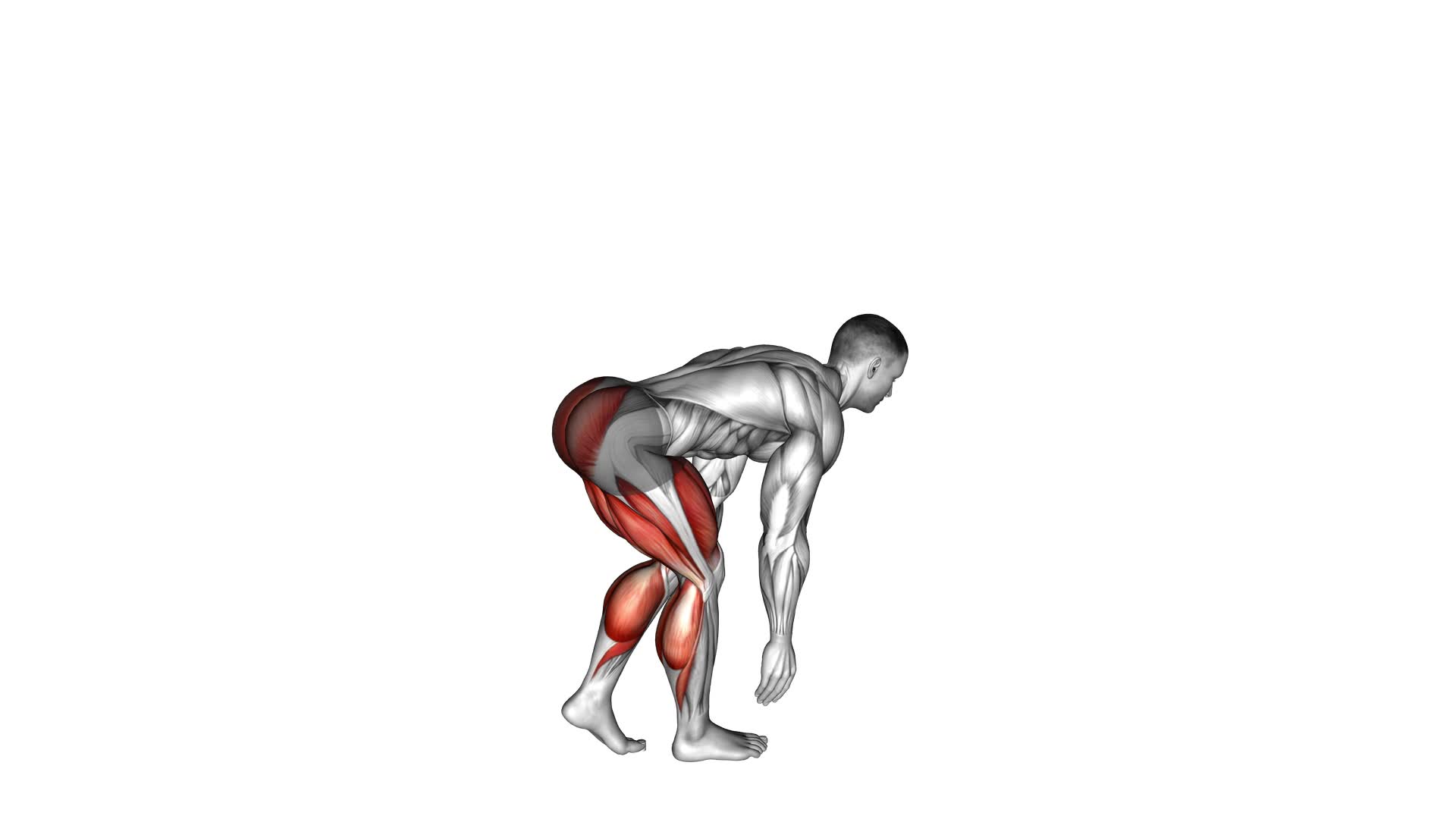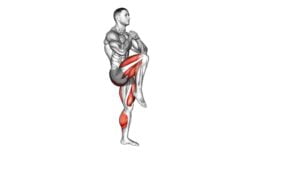Hip Lunge (male) – Video Exercise Guide & Tips

Looking to tone and strengthen your hips? The hip lunge is a great exercise for males that targets those muscles, providing a range of benefits.
Watch This Exercise Video
In this video exercise guide, you'll find step-by-step instructions on how to perform the hip lunge with proper form and technique. Avoid common mistakes and discover variations to progress your workout.
Maximize the effectiveness of your hip lunge with these expert tips.
Let's get started!
Key Takeaways
- Hip lunge targets hip muscles, improving lower body strength and stability.
- Proper form and technique include maintaining a stable stance, aligning the front knee with the ankle, and engaging the targeted muscles consistently.
- Common mistakes to avoid during hip lunge include improper alignment of the front knee, leaning too far forward or backward, and not engaging the core muscles for stability.
- Variations to progress the hip lunge workout include elevated hip lunge, weighted hip lunge, walking hip lunge, and choosing variations suitable for fitness level and goals.
Benefits of Hip Lunge for Males
You can experience several benefits from incorporating hip lunges into your workout routine as a male.
Hip lunges specifically target the hip muscles, including the glutes, hamstrings, and hip flexors. By engaging these muscles, you can improve your overall lower body strength and stability.
One of the main benefits of hip lunges for males is the development of strong glutes. Strong glutes not only enhance your physique but also improve athletic performance, as they play a crucial role in movements such as running, jumping, and squatting.
Additionally, hip lunges can help improve hip flexibility, which is important for maintaining proper posture and preventing lower back pain.
To modify the hip lunge for beginners, it's recommended to start with a shorter lunge stance. This reduces the range of motion and makes it easier to maintain balance. You can also use a chair or wall for support if needed.
As you gain strength and confidence, gradually increase the lunge stance and decrease the reliance on external support.
Incorporating hip lunges into your workout routine as a male can lead to stronger glutes, improved hip flexibility, and enhanced athletic performance. Start with modified versions and gradually progress to more challenging variations as you become more comfortable and proficient.
Proper Form and Technique for Hip Lunge
To perform the hip lunge with proper form and technique, it's crucial to maintain a stable stance and engage the targeted muscles consistently. Many people have misconceptions about the hip lunge, thinking that it's simply a variation of the traditional lunge. However, the hip lunge specifically targets the muscles of the hips and glutes, making it an excellent exercise for strengthening and toning these areas.
When performing the hip lunge, start by standing with your feet hip-width apart and take a step forward with one foot. Bend your front knee to about 90 degrees while keeping your back leg extended behind you. It's important to keep your front knee aligned with your ankle and not let it go past your toes. As you lunge down, focus on engaging your front glute and pushing through your front heel to stand back up.
To modify the hip lunge, you can use a bench or step to elevate your back foot. This will increase the range of motion and intensity of the exercise. Additionally, you can hold dumbbells or a barbell to add resistance and further challenge your muscles. Remember to always listen to your body and start with lighter weights or no weights at all if you're a beginner.
Common Mistakes to Avoid During Hip Lunge
One common mistake to avoid during the hip lunge is improper alignment of the front knee. Many people tend to let their knee collapse inward or extend too far over the toes, which can put unnecessary strain on the joint and increase the risk of injury. To fix this, make sure to keep your front knee directly above your ankle, maintaining a 90-degree angle. This will help distribute the weight evenly and engage the correct muscles, such as the glutes and quadriceps, while protecting your knee.
Another common mistake is leaning too far forward or backward during the lunge. This can compromise your balance and stability, as well as limit the effectiveness of the exercise. To correct this, keep your torso upright and aligned with your hips throughout the movement. Engage your core muscles to maintain stability and focus on keeping your body in a straight line.
By avoiding these common mistakes, you can ensure proper form and maximize the benefits of the hip lunge.
Now, let's explore some variations to progress your hip lunge workout.
Variations to Progress Your Hip Lunge Workout
To progress your hip lunge workout, incorporate different variations that challenge your muscles in new ways. Here are some advanced modifications and equipment options to take your hip lunge to the next level:
- Elevated Hip Lunge: Place your back foot on an elevated surface, such as a step or bench, to increase the range of motion and intensity of the exercise. This variation adds an extra challenge to your glutes and hamstrings.
- Weighted Hip Lunge: Hold a dumbbell or kettlebell in each hand to add resistance to your hip lunge. This increases the strength-building potential of the exercise and targets your leg and hip muscles even more.
- Walking Hip Lunge: Instead of returning to the starting position after each repetition, take a step forward with your front foot and lower into a lunge. Then, push off with your back foot and bring it forward to perform another lunge. This dynamic movement engages your muscles in a different way and improves your balance and coordination.
Remember to choose variations that are suitable for your fitness level and goals. Incorporating these advanced modifications and equipment options will help you continue challenging your muscles and making progress in your hip lunge workout.
Tips for Maximizing the Effectiveness of Hip Lunge
To maximize the effectiveness of the hip lunge, focus on proper form and engage your core throughout the exercise. This will ensure that you're targeting the right muscles and getting the most out of each repetition.
One common misconception about the hip lunge is that it's primarily a leg exercise. While it does work the muscles in your legs, it's also a great exercise for your glutes and core. By engaging your core throughout the movement, you'll be able to stabilize your body and maintain proper alignment. This won't only maximize the effectiveness of the exercise but also help to prevent injury.
Another tip for maximizing the effectiveness of the hip lunge is to vary the intensity. If you find that the standard hip lunge is too easy, you can try adding weights or resistance bands to increase the challenge. This will help to build strength and muscle in your legs, glutes, and core.
Additionally, you can try incorporating different variations of the hip lunge into your workout routine. This will target your muscles in different ways and prevent your body from adapting to the same movement over time. Some alternative exercises that you can try include the walking lunge, reverse lunge, or lateral lunge.
Frequently Asked Questions
How Many Sets and Reps Should I Do for the Hip Lunge Exercise?
To determine the number of sets and reps for the hip lunge exercise, it's important to consider your fitness level and goals. Generally, beginners can start with 2-3 sets of 10-12 reps, while more advanced individuals may do 3-4 sets of 12-15 reps.
The hip lunge exercise offers various variations and benefits, like strengthening your glutes, hips, and thighs. It also improves balance and stability, making it a valuable addition to your workout routine.
Can the Hip Lunge Exercise Help Improve Hip Flexibility?
Yes, the hip lunge exercise can definitely help improve hip flexibility.
By incorporating different variations of the hip lunge, you can target specific muscles and increase your range of motion.
This exercise not only stretches the hip flexors but also strengthens the glutes and hamstrings.
Regularly practicing hip lunges can lead to improved hip mobility, which can be beneficial for activities like running, dancing, and everyday movements.
Is the Hip Lunge Exercise Suitable for Beginners?
The hip lunge exercise can be suitable for beginners with proper modifications. It's important to start with a shorter lunge and gradually increase the depth as you build strength and flexibility.
Common mistakes in hip lunges include not keeping your front knee aligned with your ankle and not engaging your core.
What Muscles Are Primarily Targeted During the Hip Lunge Exercise?
During the hip lunge exercise, you primarily target your hip flexors, glutes, and quadriceps. This exercise helps to strengthen and tone these muscles, improving your overall lower body strength and stability.
Can the Hip Lunge Exercise Help Alleviate Lower Back Pain?
The hip lunge exercise has been found to be effective in reducing lower back pain. By strengthening the muscles in your hips and core, this exercise can help stabilize your spine and alleviate discomfort.
To perform the hip lunge exercise correctly, start by standing with one leg forward and the other leg extended behind you. Bend your front knee and lower your back knee towards the ground, ensuring proper form and technique to maximize its benefits.
Conclusion
In conclusion, the hip lunge is a beneficial exercise for males that targets the hip flexors, glutes, and hamstrings.
By maintaining proper form and technique, individuals can maximize the effectiveness of this exercise and avoid common mistakes.
Additionally, incorporating variations into the hip lunge workout can help progress and challenge the muscles further.
Remember to always listen to your body and consult with a fitness professional if needed to ensure proper execution and prevent injuries.

Author
Years ago, the spark of my life’s passion ignited in my mind the moment I stepped into the local gym for the first time. The inaugural bead of perspiration, the initial endeavor, the very first surge of endorphins, and a sense of pride that washed over me post-workout marked the beginning of my deep-seated interest in strength sports, fitness, and sports nutrition. This very curiosity blossomed rapidly into a profound fascination, propelling me to earn a Master’s degree in Physical Education from the Academy of Physical Education in Krakow, followed by a Sports Manager diploma from the Jagiellonian University. My journey of growth led me to gain more specialized qualifications, such as being a certified personal trainer with a focus on sports dietetics, a lifeguard, and an instructor for wellness and corrective gymnastics. Theoretical knowledge paired seamlessly with practical experience, reinforcing my belief that the transformation of individuals under my guidance was also a reflection of my personal growth. This belief holds true even today. Each day, I strive to push the boundaries and explore new realms. These realms gently elevate me to greater heights. The unique combination of passion for my field and the continuous quest for growth fuels my drive to break new ground.







